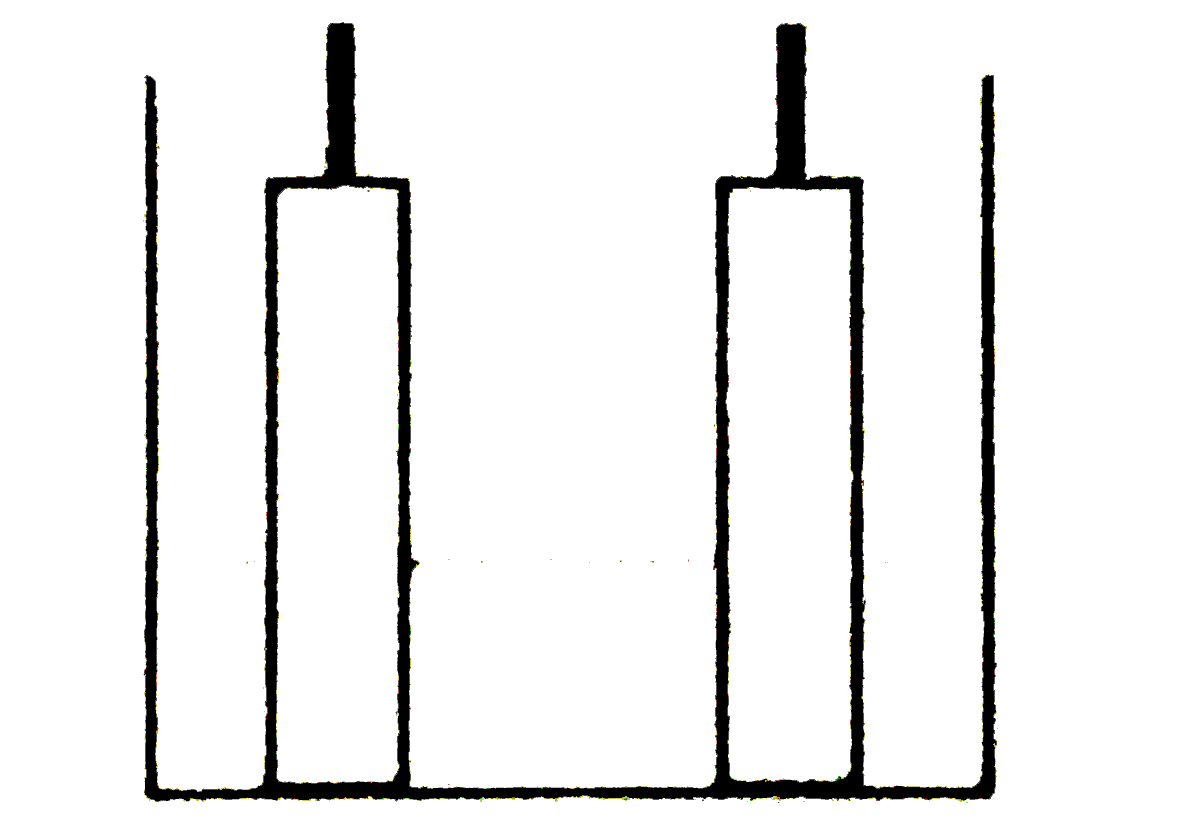A beaker contains a solution of substance'A' precipitation of substance 'A' takes place when small amount of 'A' is added to the solution. The solution is………
saturated
supersaturated
unsaturated
concentrated
The correct Answer is:B
To solve the question regarding the nature of the solution in the beaker containing substance 'A', we need to analyze the information provided step by step.
1. Understanding the Given Information:
- We have a beaker with a solution of substance 'A'.
- When a small amount of substance 'A' is added to this solution, precipitation occurs.
2. Defining Types of Solutions:
- Saturated Solution: This is a solution where no more solute can dissolve at a given temperature. If more solute is added, it will not dissolve; instead, it will remain undissolved.
- Supersaturated Solution: This is a solution that contains more solute than can normally dissolve at a given temperature. When additional solute is added, it leads to precipitation of the excess solute.
- Unsaturated Solution: This solution can still dissolve more solute. It contains less solute than the maximum amount that can be dissolved at that temperature.
- Concentrated Solution: This is a solution that has a large amount of solute dissolved in it, but it may or may not be saturated.
3. Analyzing the Situation:
- Since precipitation occurs when a small amount of substance 'A' is added, it indicates that the solution already contains the maximum amount of solute that can be dissolved at that temperature.
- The fact that adding more solute causes precipitation suggests that the solution is not saturated, as saturated solutions would not allow any additional solute to dissolve.
4. Conclusion:
- Given that precipitation occurs upon adding more of substance 'A', the solution must be a supersaturated solution. This means it contains more solute than can normally be dissolved, and the added solute causes the excess to precipitate out.
Final Answer:
The solution is a supersaturated solution.
---
- We have a beaker with a solution of substance 'A'.
- When a small amount of substance 'A' is added to this solution, precipitation occurs.
- Saturated Solution: This is a solution where no more solute can dissolve at a given temperature. If more solute is added, it will not dissolve; instead, it will remain undissolved.
- Supersaturated Solution: This is a solution that contains more solute than can normally dissolve at a given temperature. When additional solute is added, it leads to precipitation of the excess solute.
- Unsaturated Solution: This solution can still dissolve more solute. It contains less solute than the maximum amount that can be dissolved at that temperature.
- Concentrated Solution: This is a solution that has a large amount of solute dissolved in it, but it may or may not be saturated.
- Since precipitation occurs when a small amount of substance 'A' is added, it indicates that the solution already contains the maximum amount of solute that can be dissolved at that temperature.
- The fact that adding more solute causes precipitation suggests that the solution is not saturated, as saturated solutions would not allow any additional solute to dissolve.
- Given that precipitation occurs upon adding more of substance 'A', the solution must be a supersaturated solution. This means it contains more solute than can normally be dissolved, and the added solute causes the excess to precipitate out.
The solution is a supersaturated solution.
Topper's Solved these Questions
- BOOK - NCERT FINGERTPS ENGLISHCHAPTER - SOLUTIONS EXERCISE - ASSERTION & REASON15videos
SOLUTIONS
- BOOK - NCERT FINGERTPS ENGLISHCHAPTER - SOLUTIONS EXERCISE - Types Of Solution3videos
SOLUTIONS
- BOOK - NCERT FINGERTPS ENGLISHCHAPTER - SOLUTIONS EXERCISE - HOTS10videos
SOLUTIONS
- BOOK - NCERT FINGERTPS ENGLISHCHAPTER - PRACTICE PAPER -3EXERCISE - Practice Paper 350videos
PRACTICE PAPER -3
- BOOK - NCERT FINGERTPS ENGLISHCHAPTER - SURFACE CHEMISTRYEXERCISE - Assertion And Reason15videos
SURFACE CHEMISTRY
Similar Questions
Knowledge Check
- Question 1 - Select One
Effervescence takes place when sodium carbonate solution is added to
AformaldehydeBacetaldehydeCacetic acidDphenol - Question 2 - Select One
Effervescence takes place when sodium carbonate solution is added to
AformaldehydeBacetaldehydeCacetic acidDphenol - Question 3 - Select One
Effervescence takes place when sodium carbonate solution is added to
AformaldehydeBacetaldehydeCacetic acidDphenol
A solution is prepared by adding 10g of a substance 'X' to 36g of water. Calculate the mass percentage of the solute.
View SolutionWhen a small amount of HCI is added to a buffer solution of acetic acid and sodium acetate
View SolutionA solution is prepared by adding 2 g of a substance A to 18 g of water. Calculate the mass per cent of the solute.
View SolutionIn some solutions, the concentration of H3O+ remains constant even when small amounts of strong acid or strong base are added to them. These solutions are known as :
View SolutionA resistance of 50Ω is registered when two electrodes are suspended into a beaker containing a dilute solution of a strong electrolyte such that exactly half of them are submerged into solution as shown in figure. If the solution is diluted by adding pure water (negligible conductivity) so as to just completely submerge the electrodes, the new ressitance offered by the solution would be: ltbegt
 View Solution
View Solution

